As a follow up to my last post about my love of reading, I made a visit to Spring Grove Cemetery in Cincinnati, Ohio, to look for graves that have symbols of books on them. I used Spring Grove’s Locate A Loved One website feature and other genealogy resources to find out more about the lives of the individuals and reflected on how their stories might relate to the books on their graves.1
My sister helped me look up the funerary symbolism of books. Here is what we found in Stories in Stone: A Field Guide to Cemetery and Iconography by Douglas Keister:
“An open book is a favorite device for registering the name of the deceased. In its purest form an open book can be compared to the human heart, its thoughts and feelings open to the world and to God.”
“In the cemetery a closed book usually represents a completed life; the last chapter in this realm ends in the cemetery. It may also represent virginity, secrecy, and mystery. Any book can also represent the Bible.”2
Graves with open books
I found quite a few graves with open books at Spring Grove.
Emery G. Darling and Mary Darling
Emery G. Darling is noted in the 1850 census to hold the occupation of a dentist. He died in 1858 of consumption at around the age of fifty-two. Consumption, according to Google dictionary, is a term for wasting disease, especially tuberculosis. Mary passed away in 1866 of rheumatism at about sixty-seven years old.
William R. Morris and Sarah L. Morris
William died in 1859 at about the age of sixty of paralysis. Sarah died in 1861 at the age of sixty-one of consumption. There is a separate marker that notes that the couple had five children together. According to the 1850 census, William worked as a lawyer.
I thought it was notable that both Emery Darling and William Morris, who died a year apart, had open books as their markers. It made me curious if at the time perhaps this style of gravestone was a symbol for a person holding a profession requiring an advanced level of education.
Washington J. Keely
Washington J. Keely died in 1886 at the age of sixty-eight years of catarrh or inflammation of the bladder. In Keely’s obituary it states that excursion tickets from Seymour, Indiana to Spring Grove Cemetery, Cincinnati, Ohio were being sold in the hopes that every member of the Jackson Lodge, which is a Masonic lodge still in existence, could attend.3 Keely had been a past master of the lodge. He was noted to be a well known and highly respected businessman of Seymour, Indiana, who moved to Cincinnati, Ohio, to be closer to his daughter. It was said that “Mr. Keely had the confidence and respect of all who knew him. He was an honest man over whose life no mantle of charity needs to be drawn.”4 In reading about Keely’s life, I imagine that the book was a symbol of his faith and character. His epitaph reads, “HE GIVETH HIS BELOVED SLEEP” (Psalm 127:2).
Conrad Dietz
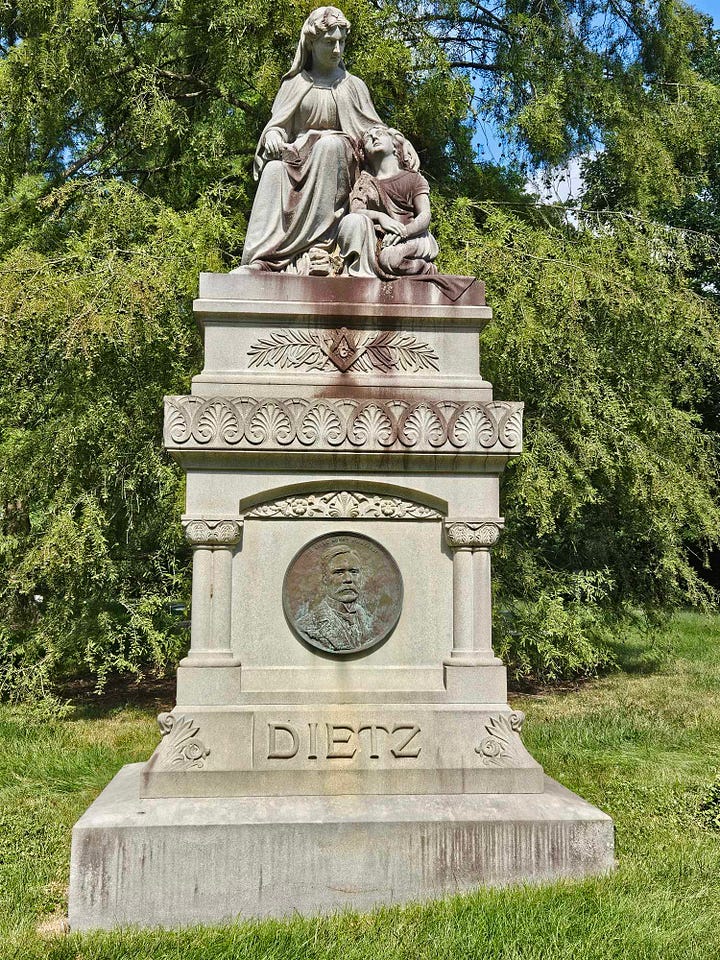
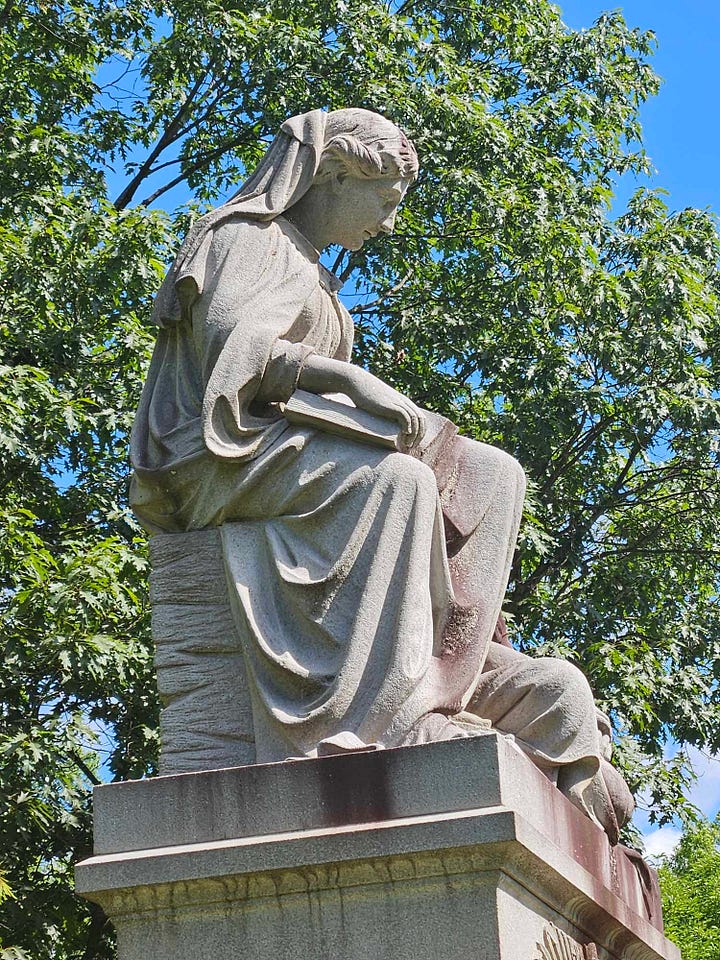
Conrad Dietz died in 1906 at the age of forty-eight of complications from an operation for appendicitis. Dietz was born in Germany. He was noted to have come to America at a young age and began working at a Cincinnati firm when he was fourteen years old. He held several positions in the commercial world until he became one of the wealthiest men in Ohio. He left behind a widow and nine children.5 The epitaph on his grave reads in German “love never fails” (1 Corinthians 13:8). The statue of the woman holding an open book in a gesture of comfort to a child relates a message of faith in comforting to those left mourning.
Charles Pettit McIlvaine
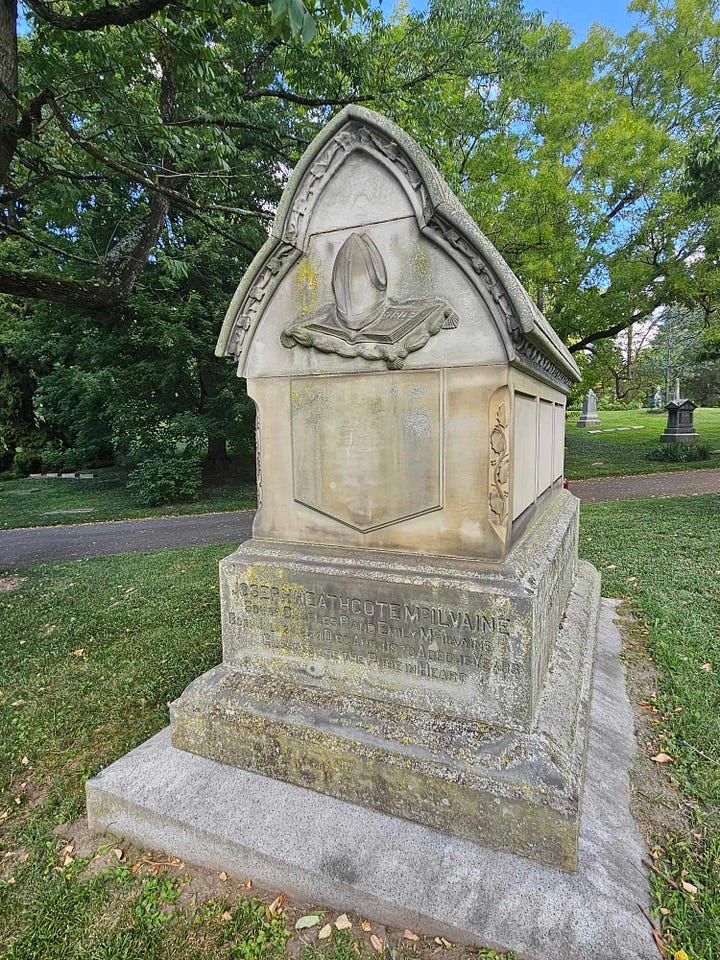
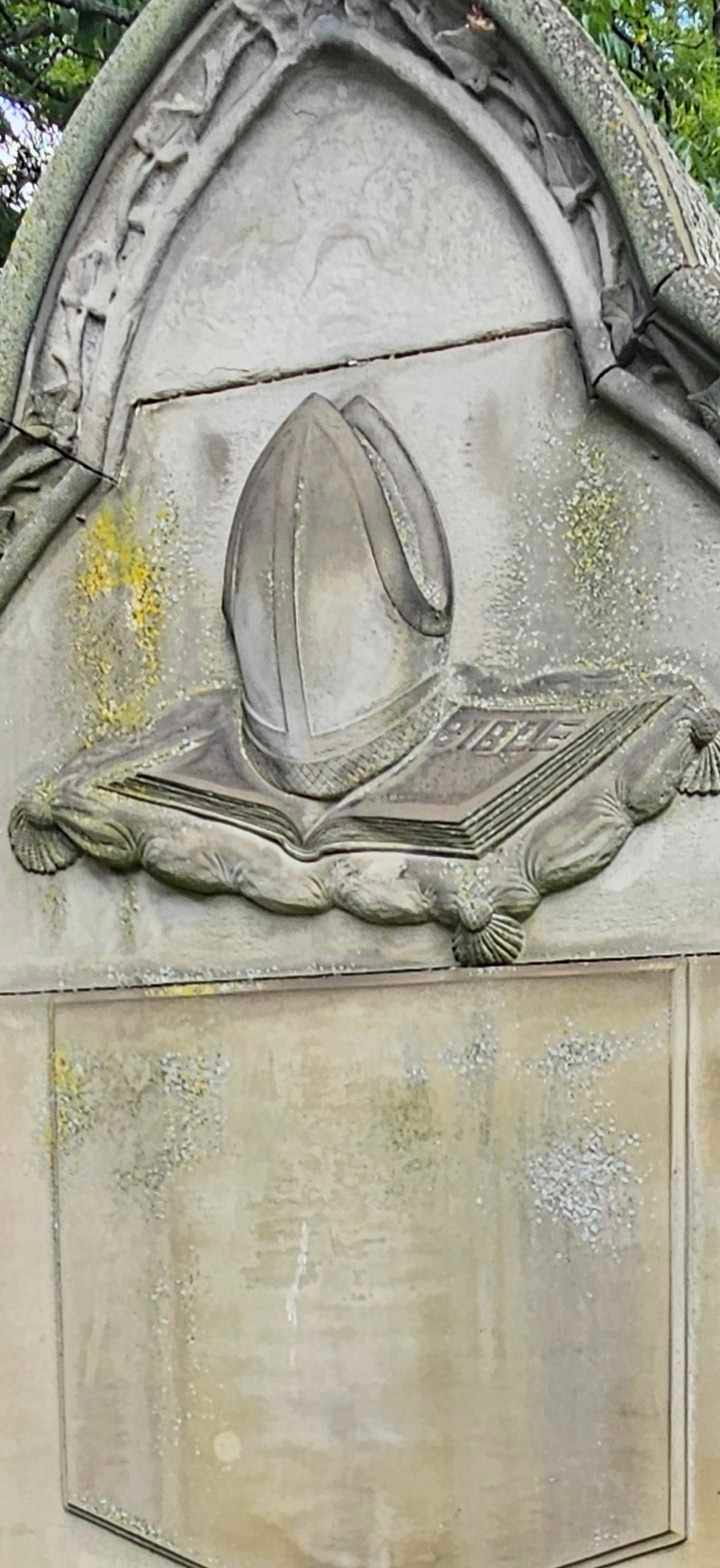
Charles Pettit McIlvaine died in 1873 in Florence, Italy of pneumonia at the age of seventy-four. He was born in Burlington, New Jersey, to a future Senator and a daughter of the Secretary of State of New Jersey and niece of the governor of New Jersey and Continental Congressman. He was a well known Episcopal bishop, author, educator and twice chaplain of the United States. He served as chaplain and professor of ethics at the United States Military Academy at West Point and his students included Robert E. Lee and Jefferson Davis. Abraham Lincoln asked him to go to England to argue against British recognition of the Confederacy. Census records in 1870 list McIlvaine as a resident of Cincinnati, Ohio. After he died in Italy, his body was carried through Europe, and at a stop in England, he was honored for four days in Westminster Abbey, the only American to ever lie in state there.6
The image of the Bible with the Episcopal Bishop hat, also called a mitre, on his tomb is clearly a symbol of his high ranking role in the church and the importance his faith played in his life.
Charles J. Jackson and Mary E. Jackson
Mary E. Jackson died in 1883 at the age of forty-four of pneumonia. Charles J. Jackson died in 1912 at the age of seventy-seven of pneumonia. It is stated in census records that Mary worked keeping their house and the couple had seven children together. Charles worked as a farmer, and according to his obituary, he moved to Kansas with his children after Mary died and did not appear to remarry. At his death, his body was transported back to Cincinnati accompanied by his daughter for burial.7 With the loss of his wife and mother of his children, it is telling that her grave is elevated in the shape of a book compared to his grave as it would have had such an immense impact on his family at the time of her passing.
Jacob Fritz
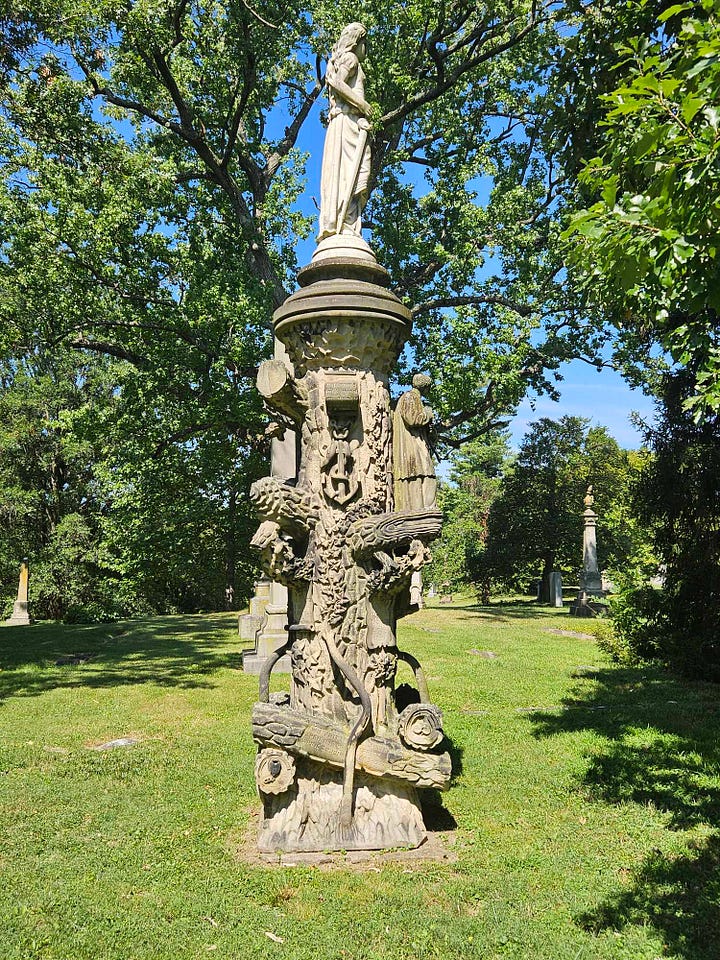
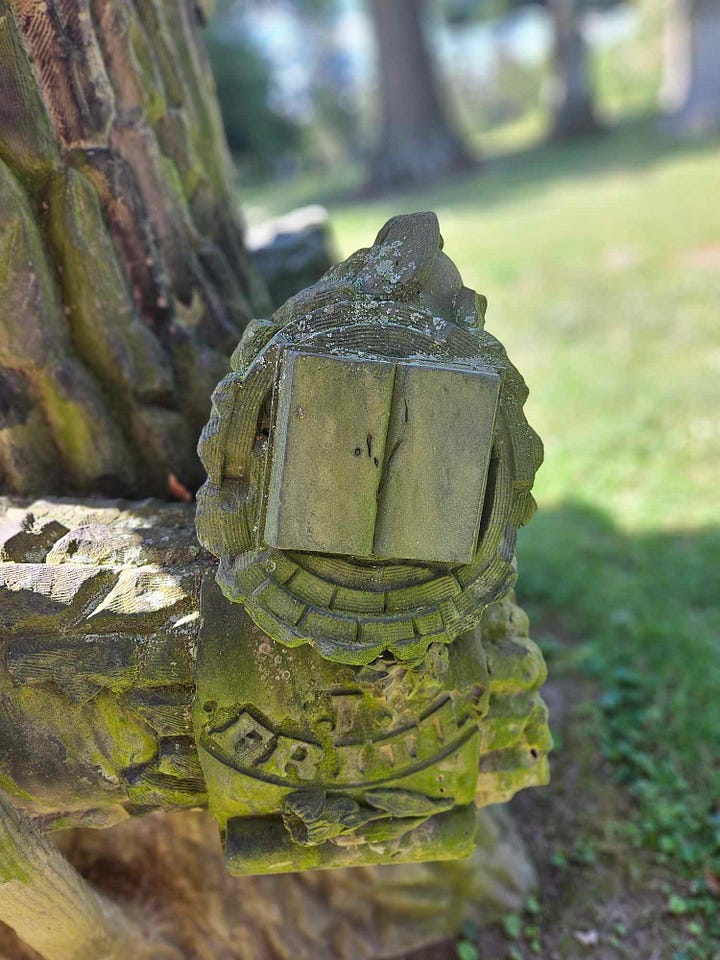
Jacob Fritz died in 1884 at the age of 50 from dropsy of the heart. Dropsy according to Google dictionary is an old term for edema. According to census records, Fritz was born in Darmstadt, Germany and had two daughters with his wife, Catherman. He worked for a time on the railroads and eventually was a butcher at Salisman Sausage Co. in Cincinnati.8 According to records Fritz was a soldier of the 29th infantry of the Union during the Civil War and was baptized into the Lutheran church of Germany.
I immediately noticed the family grave of Fritz due to its unique tree shape and various interesting symbols. I believe the open book on his grave beneath the image of a priest is a symbol of his strong religious belief that he received from his German Lutheran heritage. If you’re interested in symbolism of the entire grave, check out this article that discusses it, including the representation of his German roots.
A grave with closed books
Alice Fitch and Harriet W. Fitch
Alice Fitch died in 1864 at the age of five of flux. According to Google dictionary, flux is a type of gastroenteritis that causes bloody diarrhea. Harriet Fitch died in 1879 at the age of thirty-six due to complications of a premature birth. She was the wife of Thomas D. Fitch. The couple lived in Batavia, Ohio, and Thomas worked as an editor. According to the census, they appeared to have one other child together named Barry Fitch. Thomas eventually moved to California and remarried. Two daughters were born out of his second marriage.
The image of the two closed books seems to signify the abrupt closing of the book of life for Alice and Harriet Fitch. One book is larger than the other, which may indicate the difference in their life spans.
More to come
During my search for graves with books I encountered the graves of two individuals with links to prior Silent Sod posts. I will share more about them later this month.
https://www.springgrove.org/locate-loved-one/
Keister, Douglas. April 5, 2004. Stories in Stone: A Field Guide to Cemetery and Iconography. Gibbs Smith.
https://jacksonlodge146.org/?page_id=137
Seymour Daily Democrat, October 7, 1886
The Cincinnati Enquirer, June 27, 1906
https://en.wikipedia.org/wiki/Charles_Pettit_McIlvaine
The Evening Kansas Republican, March 16, 1912
https://wordsonstone.wordpress.com/2019/12/03/fritz-family-tree/


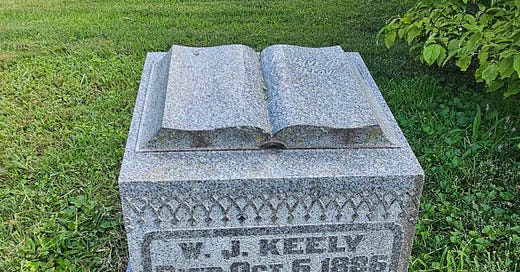



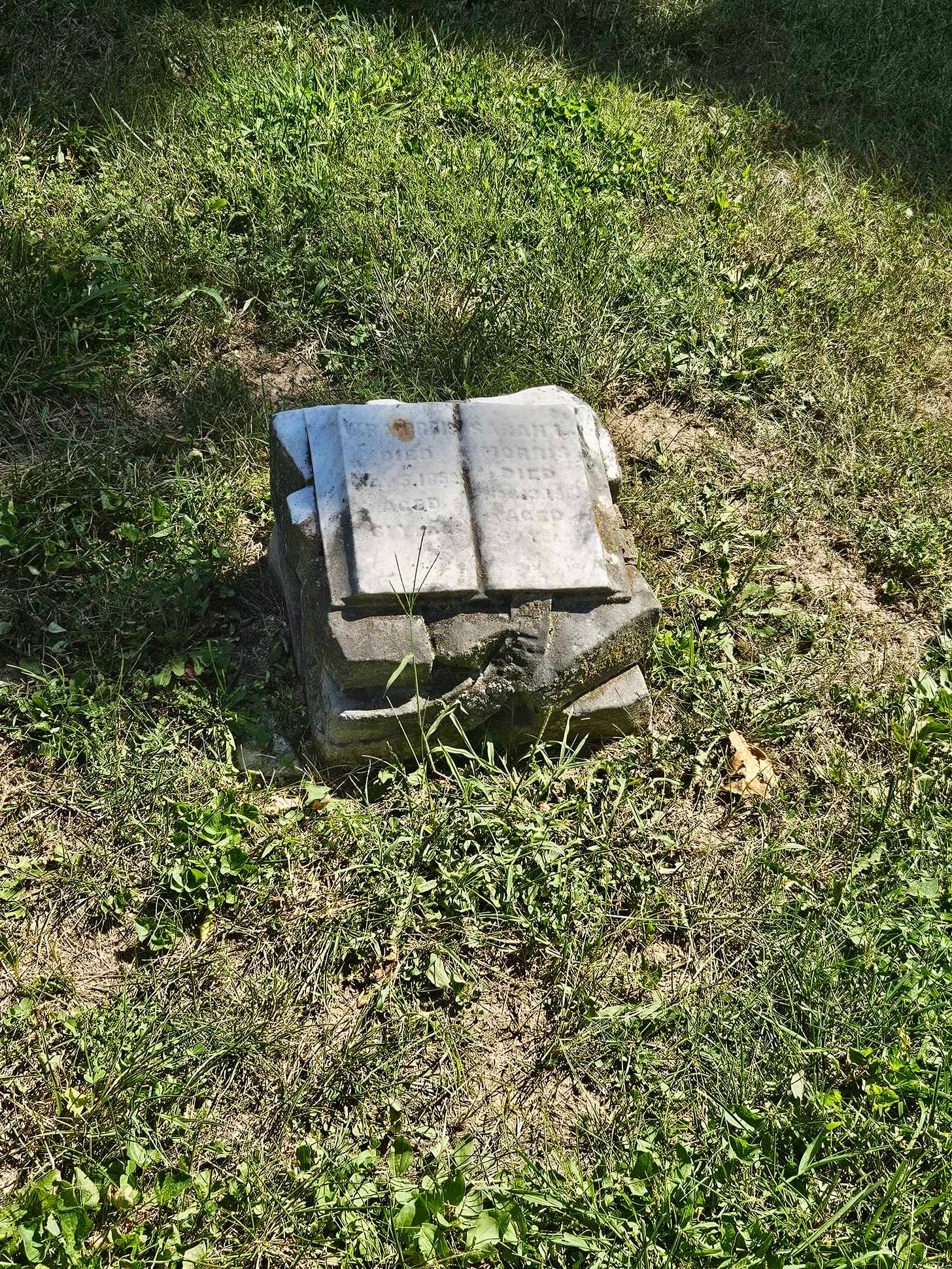

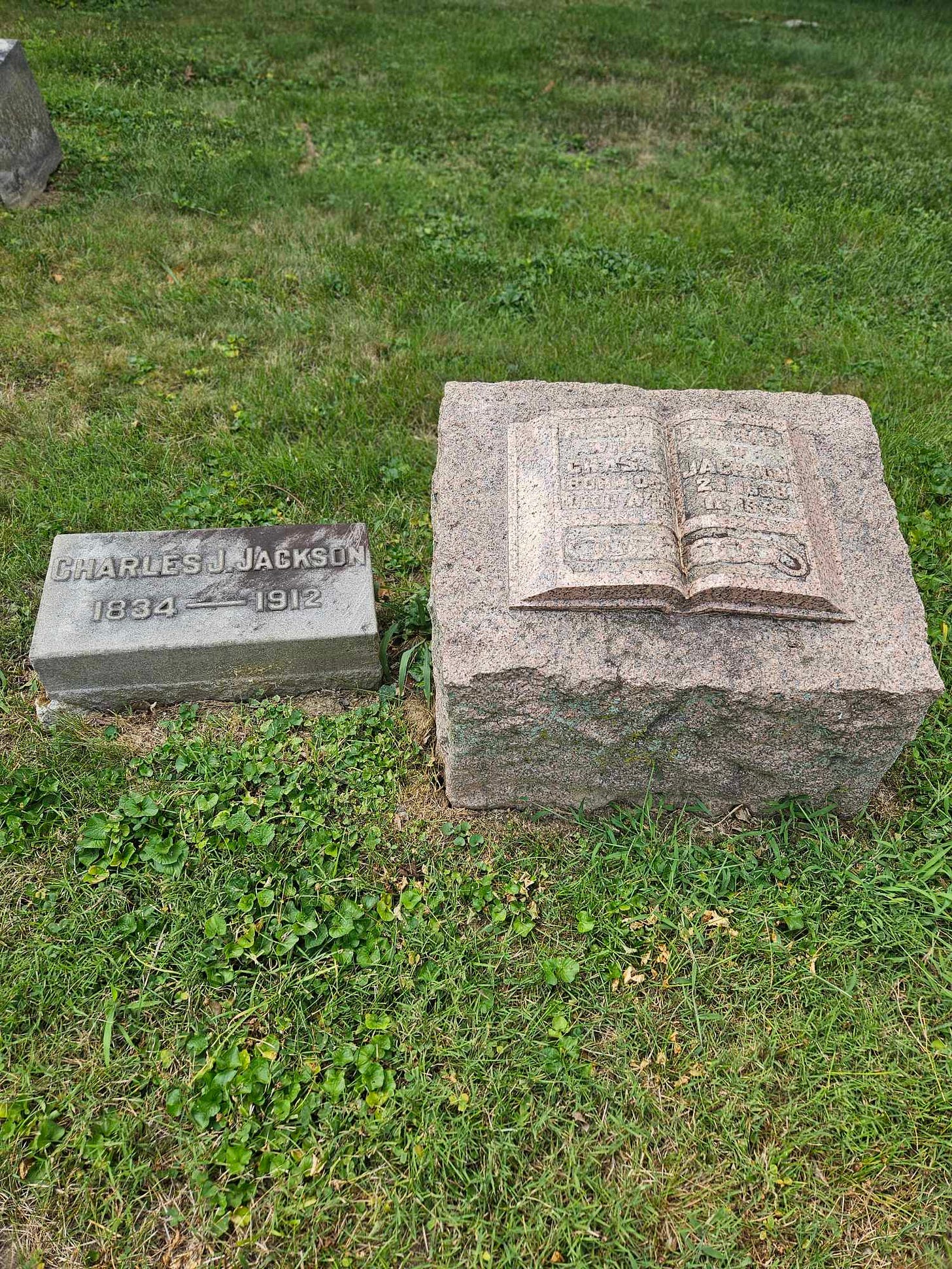
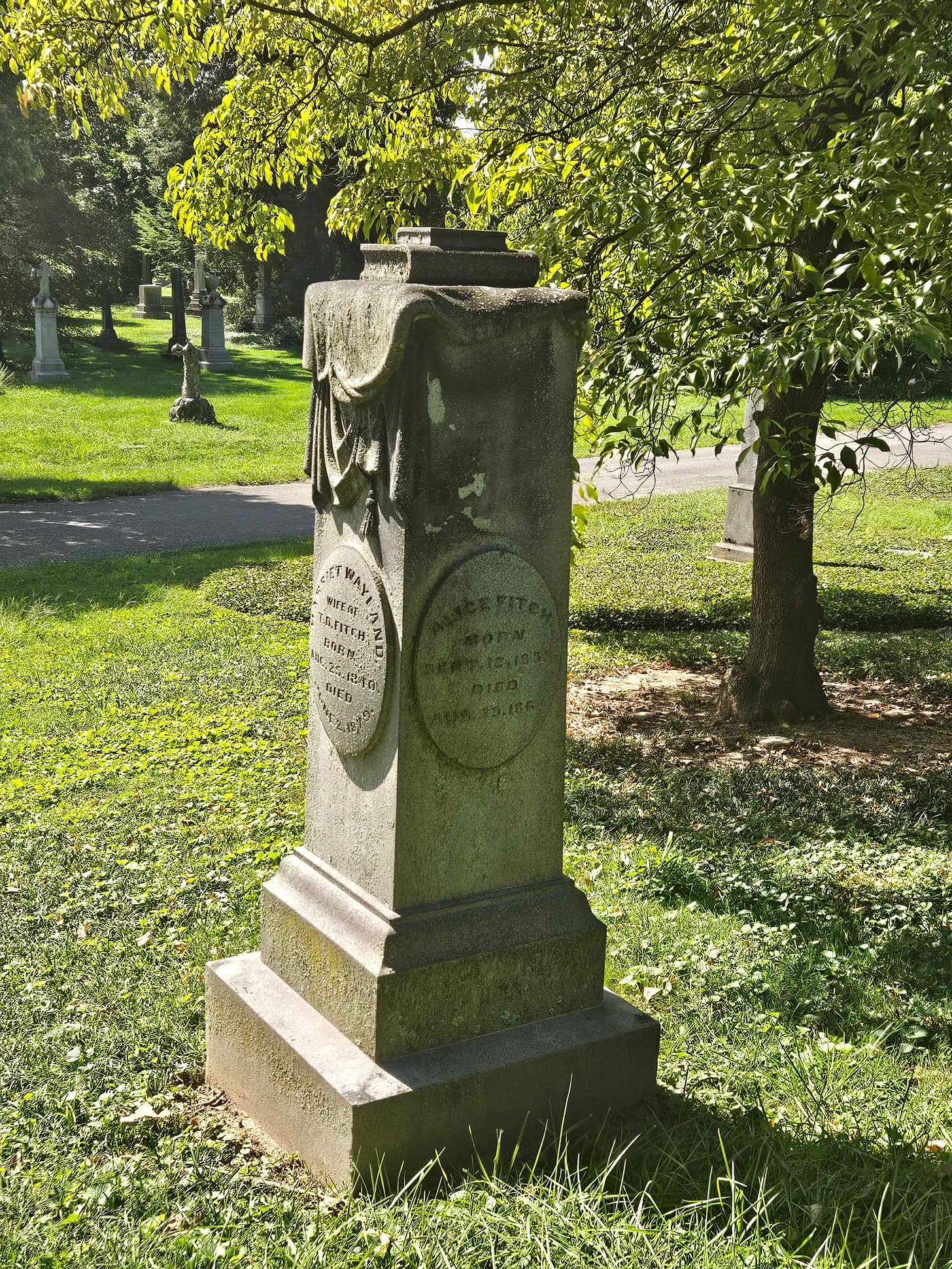
The one with the small and larger closed books really gets me.